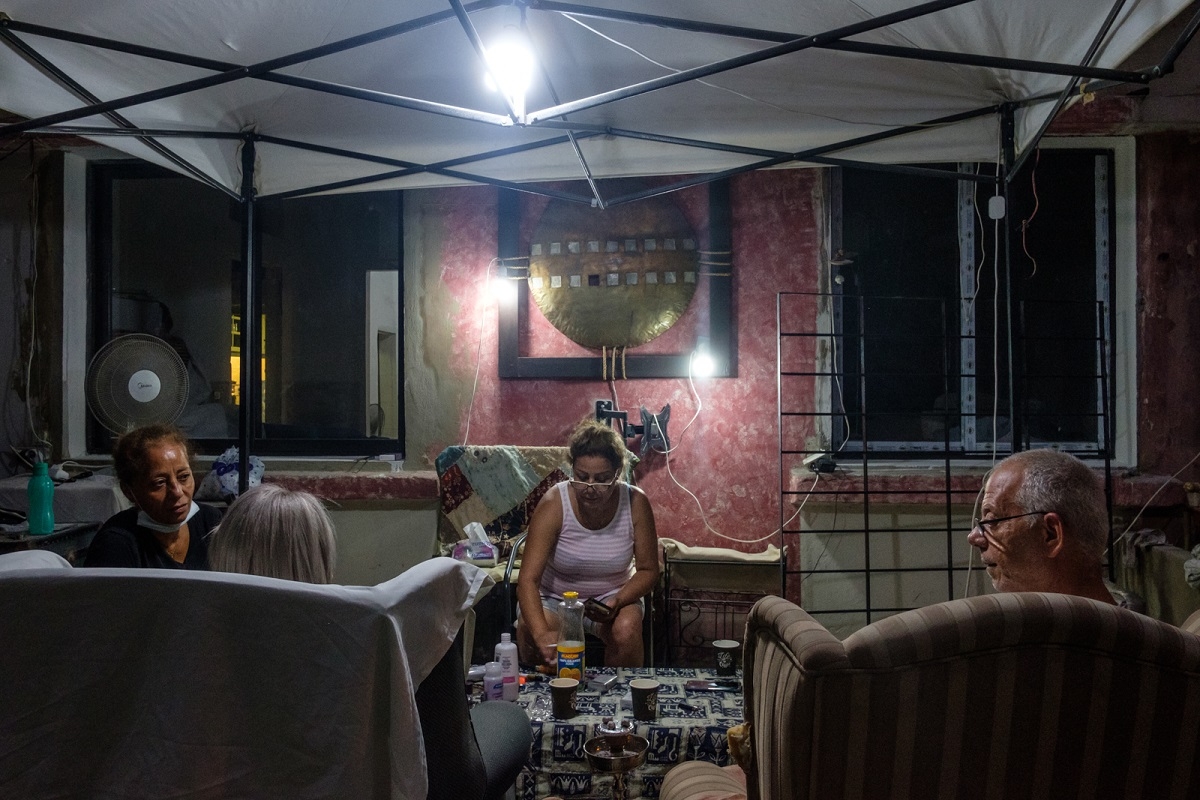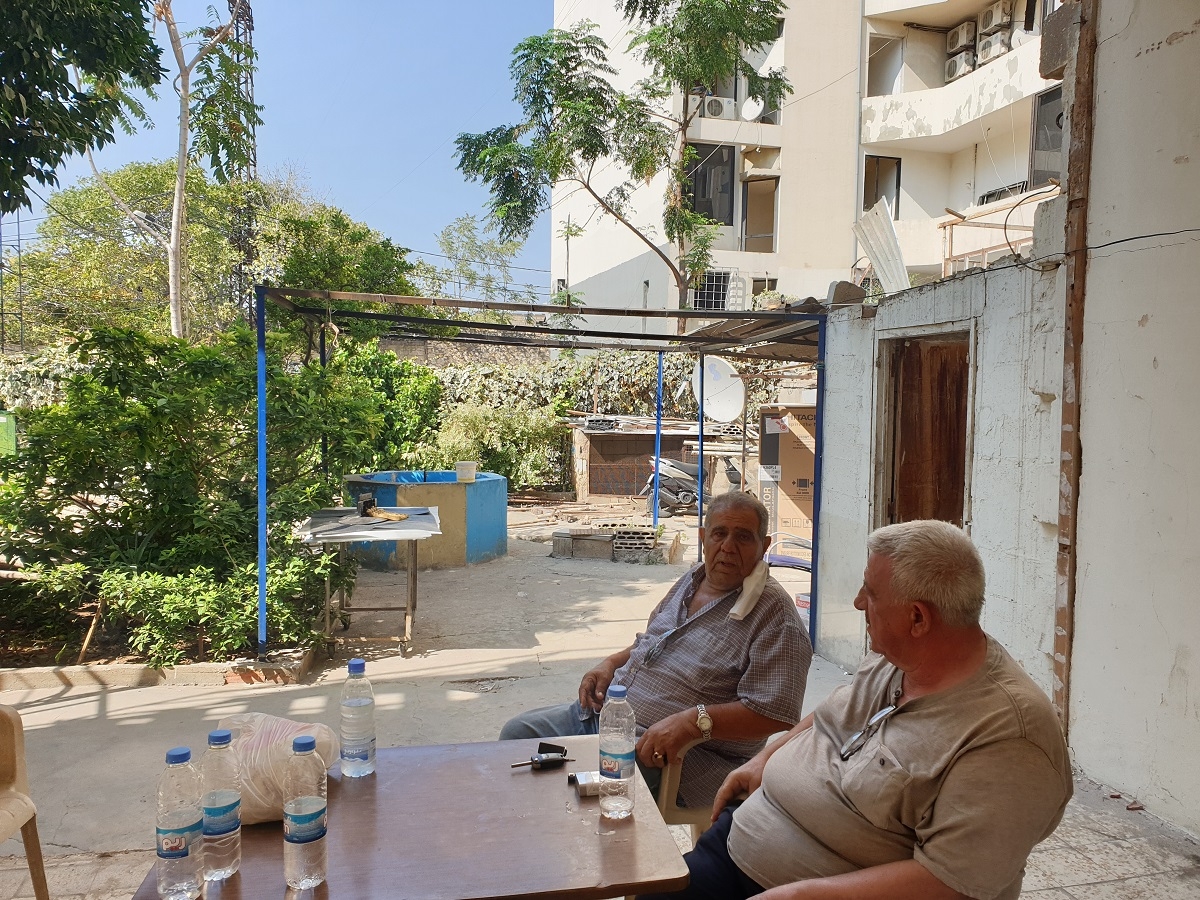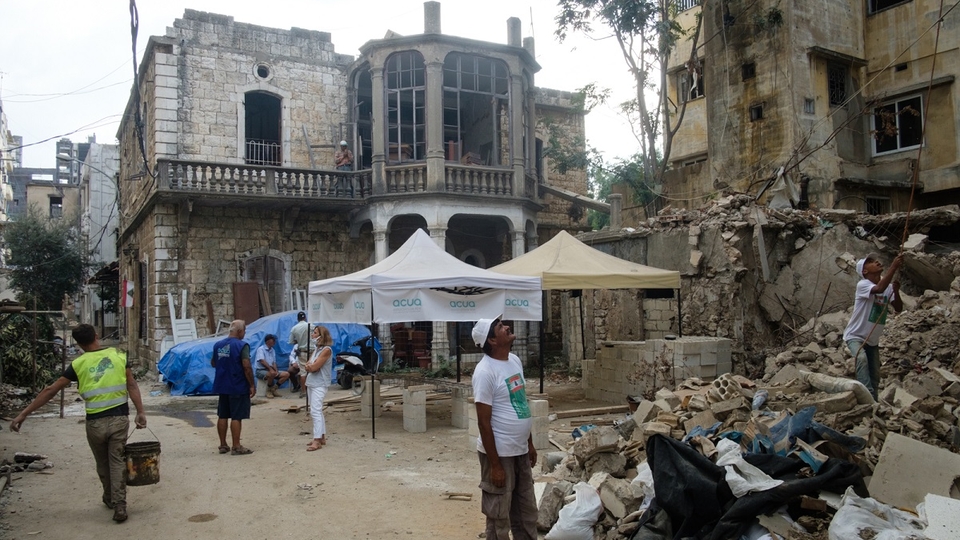Post-Disaster Karantina: Towards a People-Centered Heritage-Led Recovery
In the aftermath of violent acts of rupture, cities endure erasures of place and memory and disruptions to socio-economic and cultural practices. Mending emotional, spiritual, and socio-cultural connections becomes critical for any process of recovery — with cultural heritage, that includes sites of social significance and shared memories — serving as a catalyst for a successful recovery process. In this sense, cultural recovery operates beyond the limited definition of heritage tied to the physical and historical and goes beyond the urgent recovery process that is people-centered, heritage-led, and place-specific to address post-disaster basic needs. Crucially, it attends to socio-spatial practices that are part of the intangible heritage, and rebuilds, over the long-term, undermined cultural practices, social ties, and economic networks. Such industrial neighborhoods and informal settlements as Karantina, characterized by a deep social, cultural, and economic history, are therefore as deserving as any other neighborhood of a recovery process that is people-centered, heritage-led, and place-specific.
An Explosion in the City
August 4, 2020, is a significant date in the history of Beirut. On this day, a massive explosion severely damaged the port and its surrounding neighborhoods, including Gemmayze, Mar Mikhael, Geitawi, and Karantina. More than 200 people were killed, 6,500 injured, and almost 300,000 displaced. The city lost a significant number of its heritage sites, both tangible and intangible. Material damage to historical buildings and community spaces ingrained in the collective memory of the residents of the city is tangible. Intangible losses pertain to the economic and socio-spatial practices associated with these spaces. Not only have these neighborhoods sustained destruction on a wide scale, they are now, once again, exposed to the threat of vulture real-estate developers who view the explosion as an investment opportunity. Karantina, one of the poorest neighborhoods in the city, historically a major destination for migrant workers and refugees, was first hit by the explosion and will endure the impact of its long-lasting ramifications.
Karantina
Located on the edge of the port, Karantina's urban role changed throughout its history. The neighborhood is named after its original purpose as an Ottoman quarantine facility, built in the 1830s. In the early 1900s it became a work destination for rural-urban migrants and workers from nearby countries. It was also a destination for Armenians, Kurds, and Palestinians seeking refuge after the Armenian Genocide of 1915, World War I, and the 1948 Nakba. Over time, Karantina grew into a working-class neighborhood providing labor to the local trade, weaving, and handicrafts industries in the 1960s. During the civil war, the area was a site of confrontation between fighting factions, including the PLO and right-wing Christian militias who perpetrated one of the bloodiest massacres in the war. Since 2011, the area has become home to a Syrian community that fled the war. As if these accumulating tragedies were not enough, Karantina is perceived by its residents as shaken hardest by the explosion at the port on August 4. In an interview with Batoul Yassine, Lilyan, a 50-year-old woman and long-time resident of Karantina, conveyed this sentiment, tears in her eyes:
“All of the tragedies that Karantina went through are one thing and the blast is another. It is on a greater tragic scale. Just after the explosion, I recalled all the devastating scenes of the civil war... bodies shattered, corpses hanging from balconies, children screaming under the rubble and calling for rescue. But this time, we were baffled; was it an Israeli attack or an explosion?!”
Challenges in the Aftermath
Today, Karantina residents face numerous challenges. Many old tenants and informal settlers are threatened by forced eviction, especially that the area is a development destination. In the interviews with Yassine, residents also reported that some landlords are either refusing to sign release permits to allow reconstruction, or faking public safety reports on the structural integrity of their buildings. Meanwhile, lower-income communities without the means to seek refuge elsewhere have had to remain in their partially damaged apartments, often without windows or doors. Sonia, a woman in her mid-60s whose house was severely damaged, relates to Yassine her fear of losing her home, memories, and sense of belonging.
“We have no other place to go. This is where we have lived and worked for years, where our memories accumulated and formed. This is all we have, and we will not give it up.”

A resident of Karantina has evening coffee and juice with her neighbors on her front porch. Karantina, Beirut. September 23, 2020. (Rita Kabalan/The Public Source)
Socio-Spatial Practices
In Karantina, as elsewhere around the city, people and place are mutually defined. Thus, heritage, which is lived and practiced across spaces of significance and shared memories, is gravely threatened and needs to be turned into a catalyst for a complete recovery. In Karantina, especially, a deep relationship has been established between people and places because of multiple traumas. Various dynamics of socio-spatial, cultural, and economic practices are constructed and produced over time. They unfold in the active ground floors, porches, lobbies, and other spaces where women hold ‘sobhiyyeh,’ a morning gathering to drink coffee and chat. These are spaces where people hid from the barrages during the war, and are currently used as reference points for coordinating with aid agencies. Lilyan eloquently shares with us the added significance of this space:
“This is where we used to do our sobhiyyeh, and now we are meeting here every day to follow up with the aid organizations. It is a perfect place to stay in direct contact with everyone, especially our neighbors who live on the upper floors and can’t be easily approached by the aid providers. This is now the aid distribution station and it is still the place where we hold our sobhiyyeh.”
Social significance is also attached to street life, where children play football and men and women gather in alleyways and sidewalks for afternoon chats. The diverse and long-standing religious practices and celebrations in Karantina form a strong social experience that contributes to the residents' sense of belonging and identity. Thus, the socio-cultural heritage in Karantina is crucial for its recovery. Recovery, then, is neither a "post" condition, and nor is it a physical process. Rather, it primarily acknowledges the lived experiences of people associated with places of accumulated memories. In this regard, Sonia casts doubt on the reconstruction process and asserts that the cumulative building of lives and homes cannot be instantaneously repaired. She explains:
“How are we going to repair our houses that we had spent 30 years carefully decorating and building? Nothing will return as it was before. They killed our memories; they wiped out the spaces that hold 40 years’ worth of memories. Could this be ever restored? Still, we will never leave and give them what they want.”

Two men engage in a conversation in front of their damaged house. Karantina, Beirut. August 31, 2020. (Batoul Yassine/The Public Source)
Economic Practices
Economic practices in Karantina are also an integral part of collective memory and are essential to livelihood. The strategic location of Karantina in relation to the port has made the area economically attached to the most active infrastructure of the city. Many businesses in Karantina are industrial and deal with import-export services. Many business owners believe that their businesses, established in Karantina, cannot flourish outside it, since they are dependent on mutual relationships that connect them to the port. Ghassan, owner of an import-export livestock company, repaired his office at his own expense. He believes that there is no time to waste waiting for aid or financial compensation from untrustworthy authorities. In an interview with Yassine, he states:
“I have been in Karantina for years. I am well-established here, and I do not see my business operating elsewhere. My office is close to the port and relocating to another area would weaken my business. From my perspective, Karantina cannot survive without the port and vice versa.”
Consequently, it is important, in the aftermath of acts of violence and rupture, to consider the pre-disaster socio-spatial and economic networks that link people to a place through their practices and memories. The process of urban recovery needs to go beyond restoration or regeneration to address urban vulnerabilities and injustices. It, therefore, needs to operate within a framework that is bottom-up, and socially just in order to achieve a people-centered, heritage-led, and place-specific recovery. We, therefore, envision a process that is participatory and inclusive. It begins with the priorities determined by the people of Karantina themselves, extends to crafting a shared vision for Karantina in the aftermath of August 4, and ends by co-designing a recovery plan that sustains these forged social, cultural, and economic practices and networks.
